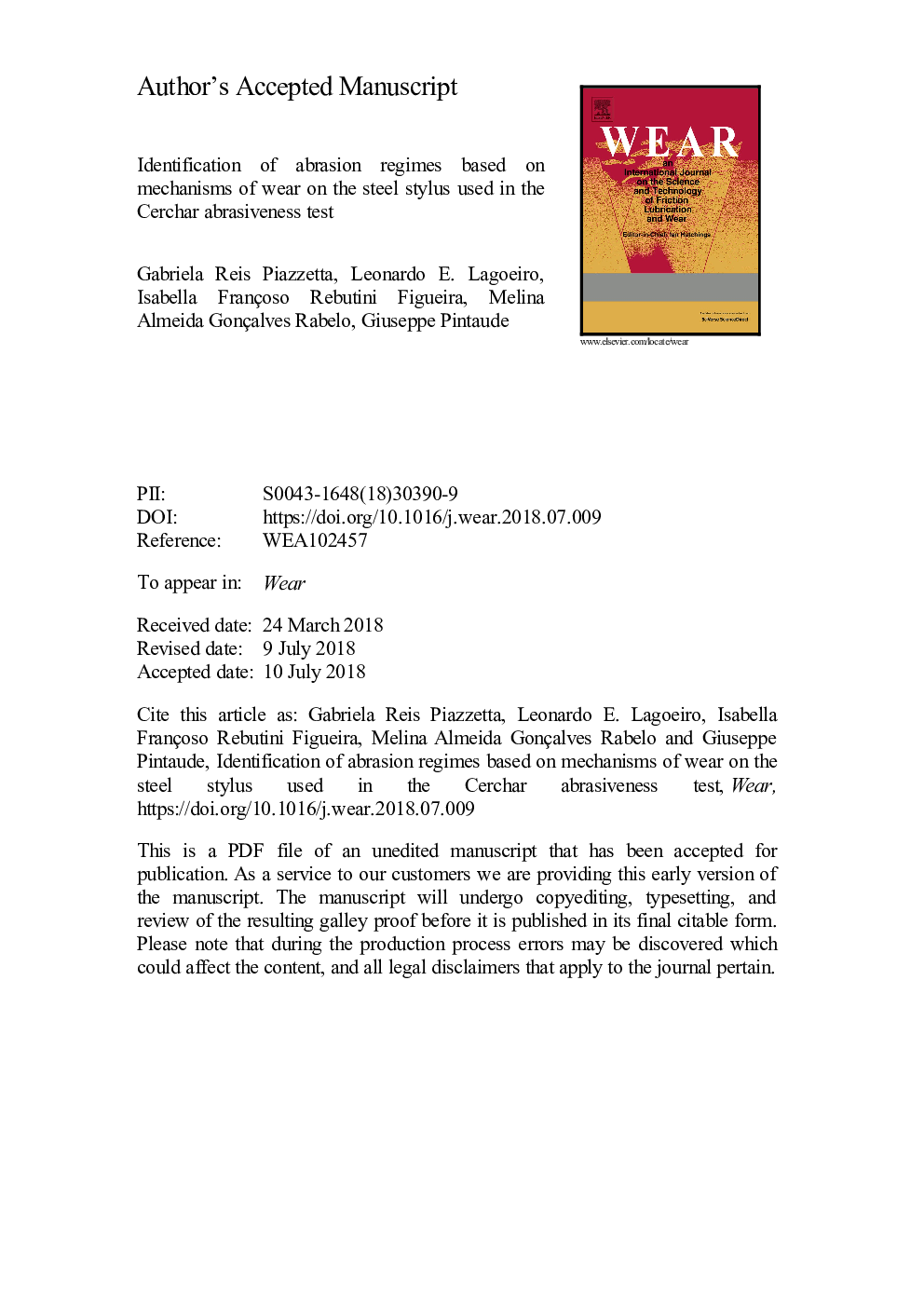| Article ID | Journal | Published Year | Pages | File Type |
|---|---|---|---|---|
| 7003747 | Wear | 2018 | 15 Pages |
Abstract
The wear of tools in rock excavation is a challenging and costly issue. To predict the added costs arising from wear, field and laboratory investigations can be conducted during the early stages of a project. Accordingly, a measure of particle abrasivity is needed. Abrasivity is defined as the capability of different kinds of soils and rocks to cause abrasive wear of metallic surfaces. The Cerchar abrasiveness test is a well-recognized lab test for assessing rock abrasivity. The Cerchar Abrasiveness Index (CAI) is determined by measuring the crater diameter [mm] produced by a conical steel stylus moving under a fixed load and sliding distance. Many authors have been trying to correlate CAI with rock properties, but no consensus has been achieved. The main reason for this difficulty arises from the effects of the microstructural complexity of rocks and their tribological response. This investigation proposes a new approach based on the use of a scanning electron microscope to identify the wear mechanisms acting on the Cerchar stylus (AISI A2 tool steel) during testing, and comparing these observations to the corresponding CAI values for nine different rock types (0.1â¯<â¯CAIâ¯<â¯6). The observed wear mechanisms were classified into two extremes (mild and severe) with a transition region between them. The mild regime is characterized by the polishing action of rocks (CAIâ¯â¤â¯1.8). The severe regime is characterized by microcutting with extensive plastic deformation (CAIâ¯â¥â¯3.1). The reliability of the current findings is discussed in the light of a theoretical conversion of CAI values into their respective wear coefficients. Our proposed approach of using wear coefficients is expected to provide better correlation between the results of the Cerchar laboratory test and real drilling rates.
Related Topics
Physical Sciences and Engineering
Chemical Engineering
Colloid and Surface Chemistry
Authors
Gabriela Reis Piazzetta, Leonardo E. Lagoeiro, Isabella Françoso Rebutini Figueira, Melina Almeida Gonçalves Rabelo, Giuseppe Pintaude,
